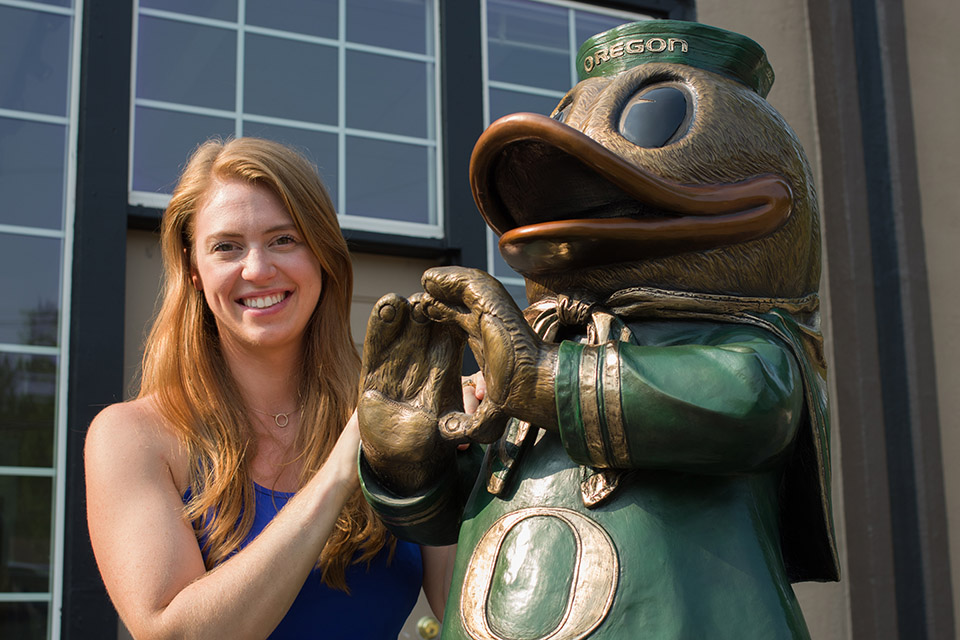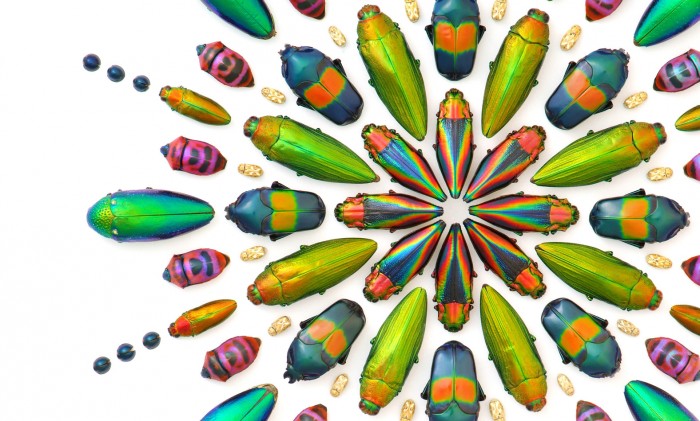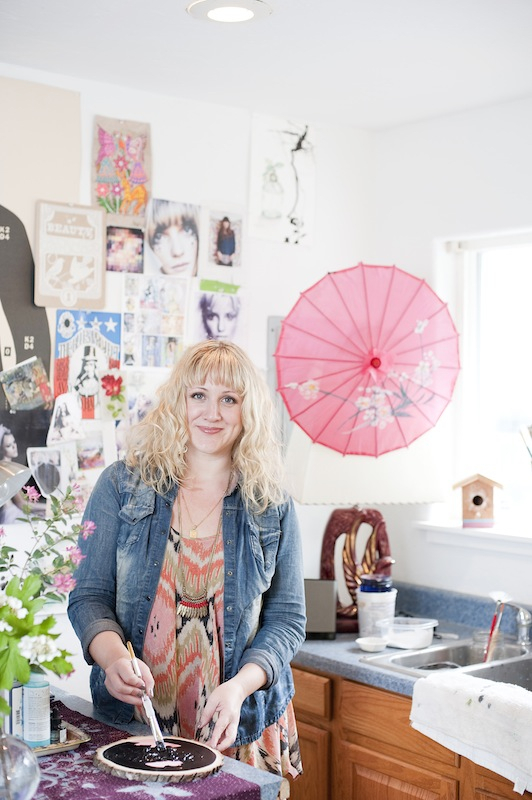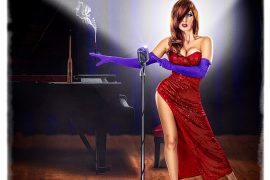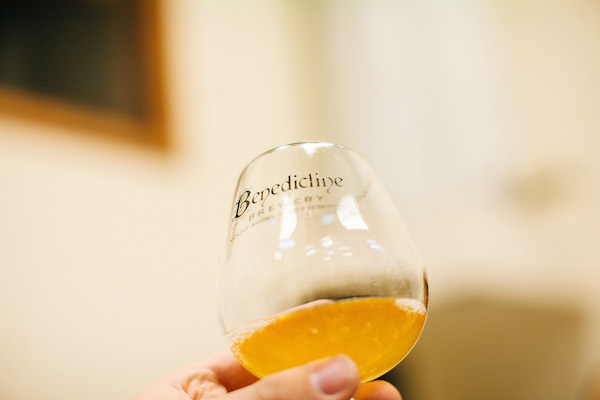Alison Brown: Sculpting Her Future
Interview by Sheila G. Miller | photography by Anthony Castro
As a college student at the University of Oregon, Alison Brown searched for a career that would be fulfilling. She knew she loved art, but didn’t think she could make a living sculpting. Then she discovered her calling was all over campus—in the form of Puddles the Duck, the university’s mascot. Today, the 28-year-old Troutdale resident has a successful business sculpting mascots and other figures, and is in the process of opening a foundry in Troutdale. Her company, Campus Sculptures, offers sculptures of the mascots of UO, Oregon State University, Boise State University and the University of Southern California. In 2016, she unveiled a 7-foot bronze sculpture of the Oregon Duck in front of Matthew Knight Arena on the UO campus.
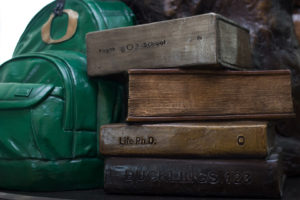
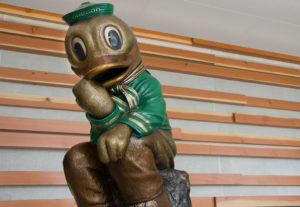
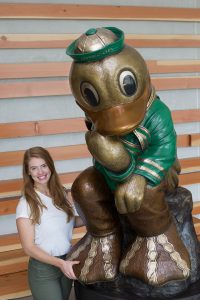
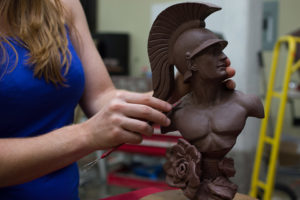
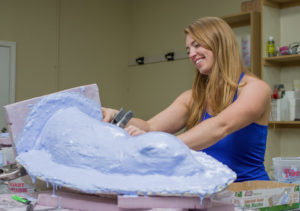
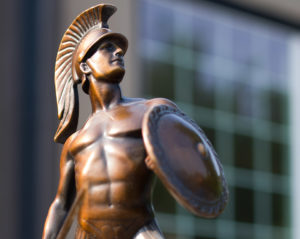
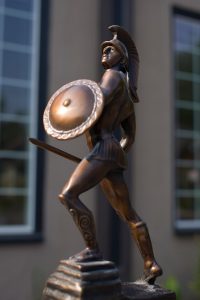
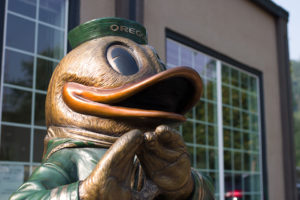
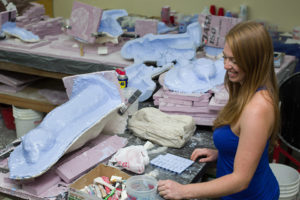
How did you come to sculpting?
Alison Brown: I just assumed nobody was making a real living as an artist. As a kid I was probably too practical and I thought about what I could actually do to make a living. Even though I knew art was what I loved, I thought, ‘I have to find something I love as much as this that will pay the bills.’ But I never really did. When I met my husband, Rip Caswell, who has a gallery, I was really inspired not only by his work but because of his business sense. The lightbulb went on—there are people out in the world who are creating artwork for a living. I really wanted to be a part of that. I was pretty terrified at first and had to basically jump into it with my eyes closed. I started learning how to create artwork and cast in bronze and learn the business side of it, too. I just went full-fledged into it, from a Spanish degree.
How did the mascot niche come along?
Alison Brown: I was just finishing up that degree when I decided to start sculpting and casting in bronze. And I thought to myself, there are so many things out there artists are already doing—I realized how good all these artists were and I’d never even created anything before. How could I compete with people out there? So I thought, ‘I may as well just start where I am,’ and that was at the U of O. I didn’t know how to gather references. I knew people at the Duck Store, so I was able to get to the mascot up close. I really started working with that figure and that character, and then with the help of U of O licensing I was able to start selling. It just happened naturally, and the more I got into it I started meeting marketing people, and before I knew it I was networking with top donors to U of O.
For an art novice, what is the process of making a large-scale bronze sculpture?
Alison Brown: Bronzes are made through a centuries-old process called lost-wax casting. Artists have been creating this way for generations—you start with a clay sculpture and then you take a mold of the clay. Today we have rubber, which they didn’t have years ago, so we’re able to create multiples using the original mold. That stays the same wherever you go, from a small sculpture to a monumental sculpture. Obviously it’s a huge undertaking, physically, to create something large scale, and really there’s a lot of energy that goes into a monument. It really brings people together in the process as a standalone art piece, as an installation. It can anchor a setting or a building, and that’s really what large-scale work does as opposed to smaller stuff. Bronzes are really special.
You started with Oregon. When did you spread to other universities, and is there any rivalry too big?
Alison Brown: With the Beavers, it’s a friendly rivalry, and they like the crossover. I didn’t know this, but so many people actually donate anonymously to both universities. That’s what I like about the institutions in Oregon—there’s really enthusiasm for everyone. I mean, not during football season, but…
What’s next?
Alison Brown: I’m starting to get more commissions for figurative work. In May I did a statue of Bill Walton and that was really fun. It’s down in San Diego and it’s of Bill with his bike and his signature—hands up in the air. I’m also working quite a bit in partnership with my husband, Rip Caswell, so it’s a natural evolution of both of our businesses coming together. I expect I’ll be working with the Ducks forever. You’ve got to just kind of flail along as far as you can as an artist.


